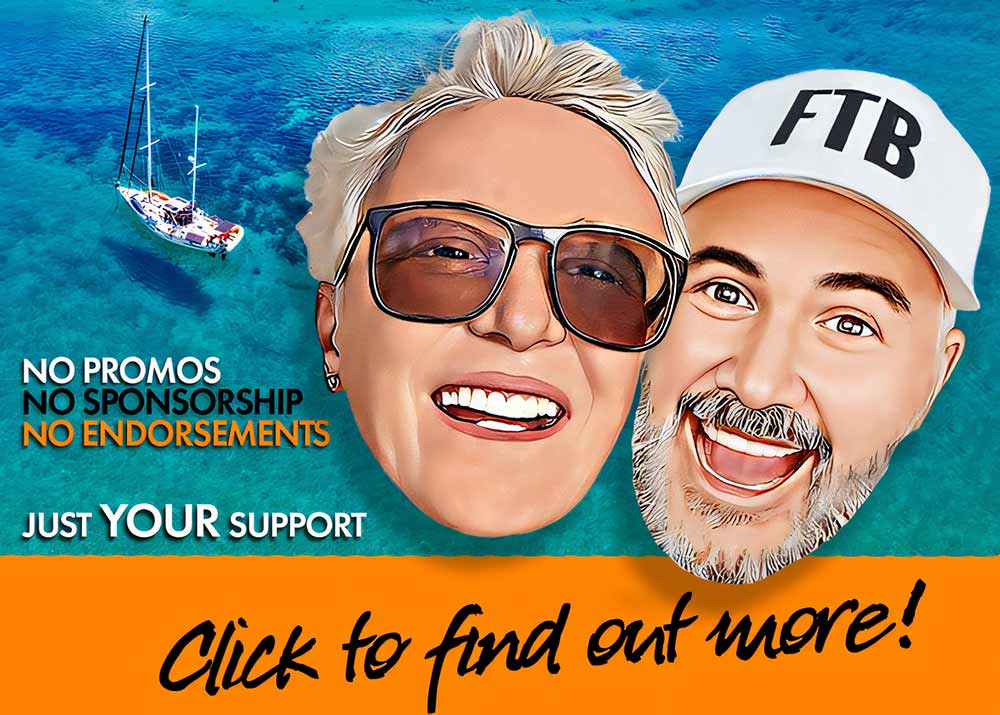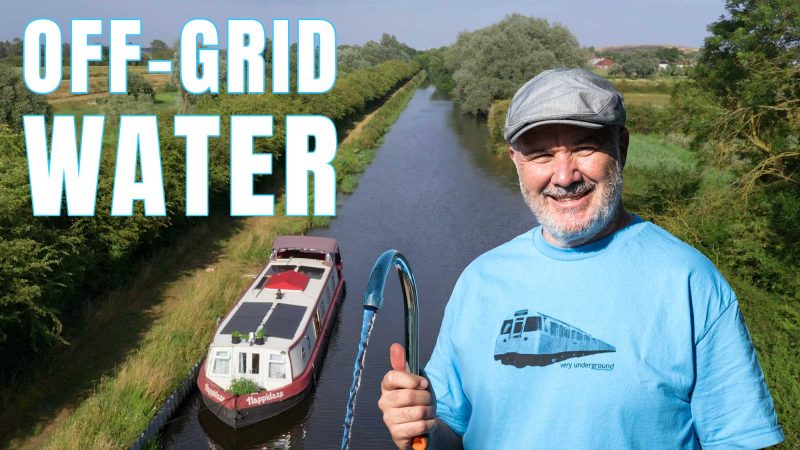Introduction To Water Independence
Is it possible to turn murky canal water into safe drinking water on a narrowboat? We’re on a quest for true off-grid water independence and believe the answer is yes. This post outlines our comprehensive journey, from initial research into multi-stage filtration to the final decision to develop a comprehensive purification system.
We explore the science of removing contaminants, such as silt, chemicals, bacteria, and viruses, using sediment filters, activated carbon, UV sterilisation, and the ultimate safeguard: Reverse Osmosis. Follow along as we design and prepare to install the system that will finally cut our ties to marina water points, giving us the freedom to drink directly from the canal with total peace of mind.
High Water Consumption
For any continuous cruiser, there’s a tether that always, eventually, pulls you back to civilisation. It isn’t the need for fuel, and it isn’t a lack of food. It’s the water demand. With a 600-litre tank, we have a decent supply, but our water usage is high. Between showers, washing up, and running the washing machine, we find ourselves in a constant cycle of planning our route around the nearest marina or CRT water point. This dependence has always been the single biggest obstacle to achieving true, untethered freedom on the canals.

Our dream is to move continuously, exploring the vast network wherever the water takes us. To achieve this, we require a constant and reliable source of water, available 24/7. This desire for independence is what sent us down the rabbit hole of water purification, inspired by two decades of sailing, where a seawater-to-drinking-water reverse osmosis system utterly revolutionised the way we could travel. We knew that if we could solve the water problem on our narrowboat, we could unlock a new level of freedom.
The Big Question: Can You Drink Canal Water?
When we first floated the idea of turning canal water into our primary source for drinking, washing, and everything in between, the response from the community was immediate and passionate. The comments ranged from supportive to deeply sceptical. “I wouldn’t touch that water,” said one viewer, echoing the concerns of many.

These concerns are valid and fall into three main categories: biological, chemical, and human. People rightly pointed out the ‘duck poo’ and other animal waste that is a natural part of any living ecosystem. They worried about chemical runoff from farmers’ fields, which were often contaminated with pesticides and herbicides. And, perhaps most unsettlingly, they highlighted “the human element”—the unfortunate reality that not all waste from boats is disposed of correctly.
Our answer to these sceptics is simple: a properly designed, multi-stage filtration system is engineered to target and remove every single one of these contaminants systematically. It is not just a filter; it’s a purification process designed to handle particulates, chemicals, and biological nasties, rendering the water safe.
The Science of a Multi-Stage Filtration System
To gain a firm grasp of the project, I first researched and outlined the science behind the absolute minimum system we’d feel comfortable with. You can see a comprehensive breakdown of this basic system here. This initial plan involved a five-stage process (four filters plus a steriliser) designed to clean the water progressively.
Stage 1: The Sediment Filter. This is the first line of defence, a coarse filter designed to catch the large, physical particles you can almost see—silt, rust, grit, and bits of organic matter.
Stages 2 & 3: The Carbon Filters. Next, the water would pass through two stages of carbon filtration. Activated carbon, often made from coconut shells, is incredibly porous and works through adsorption, trapping chemical contaminants like pesticides, herbicides, and chlorine. This also dramatically improves the taste and smell of the water.
Stage 4: The Sub-Micron Filter. This filter, with a pore size of one micron or less, is a physical barrier against microscopic organisms, specifically protozoan cysts like Giardia and Cryptosporidium.
Stage 5: UV Sterilisation. As a final firewall, the water flows past an ultraviolet lamp. This UV light destroys the DNA of any remaining living microbes like bacteria and viruses, making them inactive and harmless.With a high flow rate of around 15 litres a minute, this system could easily keep our main tank full. But that led to the most critical question of all.

Water Independence: Adding a Final Line of Defence
Does this five-stage process make the water truly safe for drinking? In theory, yes. In practice, I wanted another, ultimate line of defence. My research, and the excellent feedback from our viewers, pointed towards one technology: Reverse Osmosis (RO).
While not strictly necessary on freshwater canals, an RO system forces water through an incredibly fine membrane that removes 99.9% of everything else, including any viruses, heavy metals, or dissolved solids the initial system might have missed. Our plan evolved: we would use the five-stage system to fill our main tank with clean water for showering and washing. Then, for drinking and cooking, we would install a small, under-the-sink RO unit with its own dedicated tap. This two-tier approach would give us total peace of mind.
An Unexpected Twist and a New Partnership
With the plan finalised, I began the DIY process. I measured the space under the seating in our bow, where the main water tank is located, and purchased the filter housings, all the fittings, and even a sheet of marine plywood to mount everything on. We were ready to build.
And then, something happened. We received an email from Damien at Off-Grid Water. We had spoken to him earlier in the year, but life got in the way for both of us. Now, having seen our video, he got back in touch and asked if we were still interested in his solution. After seeing the quality and thoroughness of his systems, we enthusiastically agreed.
We want to be completely transparent: Damien has provided us with one of his systems to install and review. This is not a paid promotion. We have agreed to share our honest, unfiltered experience with you. If it works, you’ll know. If it doesn’t, you’ll also know. Damien stands by his product, and we’re ready to put it to the ultimate test.

The system that arrived is even more comprehensive than our original DIY plan. It consists of a pre-mounted, seven-filter system that includes the pump and UV steriliser. This will handle the primary job of filling our water tank. In addition, he provided a self-contained, three-filter Reverse Osmosis unit that will be installed under the sink. This RO unit will take the already-clean water from our main tank and purify it to the highest possible standard for our dedicated drinking tap.
So, the decision is made. We are going all-in on drinking canal water. In our next update, we will walk you through the complete installation of this incredible system and, most importantly, share the results. The quest for true water independence is finally underway.
See the full discussion and the Off Grid Water solution we’re proposing to install in the video below.
If you like our content and would like to support us, we will give you ad-free access to our videos before they go live to the public, discounts in our shop, access to Jamie’s iconic full-res photographs, and supporter-only blog posts. Click our ugly mugs for more info!



